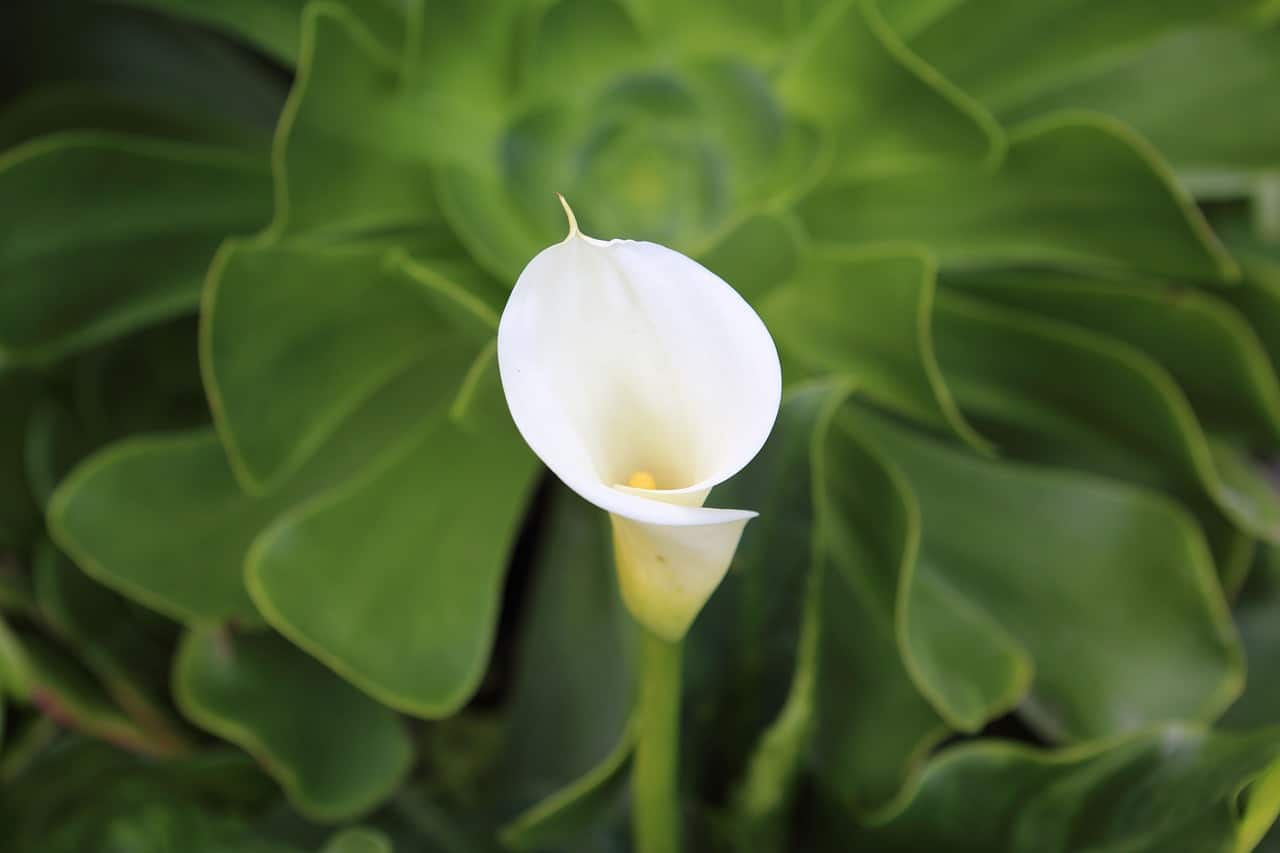If you’re unsure when to transplant calla lilies, the best time to do so is in the spring once the frost has passed. You will have an idea of when to expect the last frost date by learning your state’s hardiness zone. Still, the weather can be unpredictable, so use the date as a guide but remain diligent.
Calla lilies are best for USDA-rated growing zones 8 to 10, and you can use this as a guide to adjust their growing environment. Remember that the success of your transplants involves ensuring that the plants are vigorous enough to move outdoors. This is also why many gardeners start their calla lilies and other plants in the greenhouse before transplanting to ensure that they are strong enough to tolerate outdoor conditions.

While calla lilies are not technically a flower, the trumpet-shaped blooms will surely turn heads. This makes them a worthy plant to cultivate either for personal or commercial satisfaction. However, you should also learn basic management practices, especially when and how to transplant them.
How To Know When To Transplant Calla Lilies And Tips For Transplanting
As mentioned earlier, the best time to transplant your calla lilies is after the danger of frost has passed. This is usually in the spring when the soil is starting to warm up. Another sign that you can begin transplanting the plants is midsummer to late fall when the foliage has died.
Most calla lily varieties are sensitive to frost, so make sure to lift the rhizomes before frost until it passes. Still, it’s impressive to know that calla lily rhizomes are not as prone to root rot in conditions where other rhizomes will struggle. To guarantee your transplant’s success, you can use a greenhouse to start the plants as well.
Preparation
The University of Minnesota Extension recommends using a greenhouse to start your calla lilies. This is because it will be more comfortable to control the temperature and other factors that affect plant growth and health. If you live in a region where it takes time for the outdoor garden soil to warm up, the greenhouse also proves to be an excellent solution.
What’s the best soil for preparing calla lilies? Enrich and maintain the moisture of the ground first by adding compost and loosening it. The rhizomes can have a depth of 4 inches in pots and then use the pot’s depth for the hole’s size in transplanting.
Remember to allocate 12 inches of spacing among plants.
Planting
When planting the calla lilies, don’t forget to prioritize moisture, and that you must plant them quickly, so the roots don’t get dry. If you don’t have an outdoor garden, it’s also possible to transplant the lilies from the greenhouse inside your house. Just remember to water them generously and avoid using a pot that is too small for them.
Once you’ve transplanted the calla lilies, fertilize the plant with liquid fertilizer until it feels moist. You can also add mulch to maintain moisture and prevent weeds from growing. Overall, transplanting calla lilies is simple, and the only part where you want to be extra careful is when lifting its rhizome.
What You Need To Know Before Growing Calla Lilies
Using a greenhouse will make growing calla lilies extra easy, especially if you’re not in their growing zone. You can also consider them as annuals if you’re in a colder region since freezing conditions can cause them to go dormant. Since you can divide their rhizomes every few years, you can see calla lilies as one of the most productive plants to cultivate.
Calla lilies are natives from the topics, so they are better for those living in warmer climates. However, this doesn’t mean that you can let them receive direct light because the petals can get damaged. And as you’ve read throughout this guide, the best soil for calla lilies is moist, fertile, and well-drained.
The fact that calla lilies are hardy for warmth and humidity makes them bloom well amidst humid summers. The only potential drawback to avoid is digging up their rhizomes for overwintering once fall comes, and it’s freezing. If you want to get an excellent blooming season, you can use a controlled-release fertilizer as well and remove spent blooms once they slow down in autumn.
Care for calla lilies in winter
The best time to dig up the rhizomes is after the first frost in autumn. You can store them in peat moss after they completely dried out. Choose a dry, dark, and cool location for them until spring.
However, you can keep your garden’s momentum by starting calla lilies in the greenhouse in late winter for transplanting in spring outdoors.
Conclusion
Like all plants, transplanting calla lilies properly is crucial and quite daunting. Start by knowing when to transplant calla lilies, which is in spring after the frost’s danger has passed. It’s also possible to transplant in midsummer to late fall when you noticed the foliage has died.
Once you get the timing correct, the next thing to be careful is digging up the rhizome. Be gentle throughout the procedure, and you should feel more relaxed for the process of transplanting itself. Remember that calla lilies are tropical, so those in colder regions can use a greenhouse to meet your plants’ ideal growing conditions.
